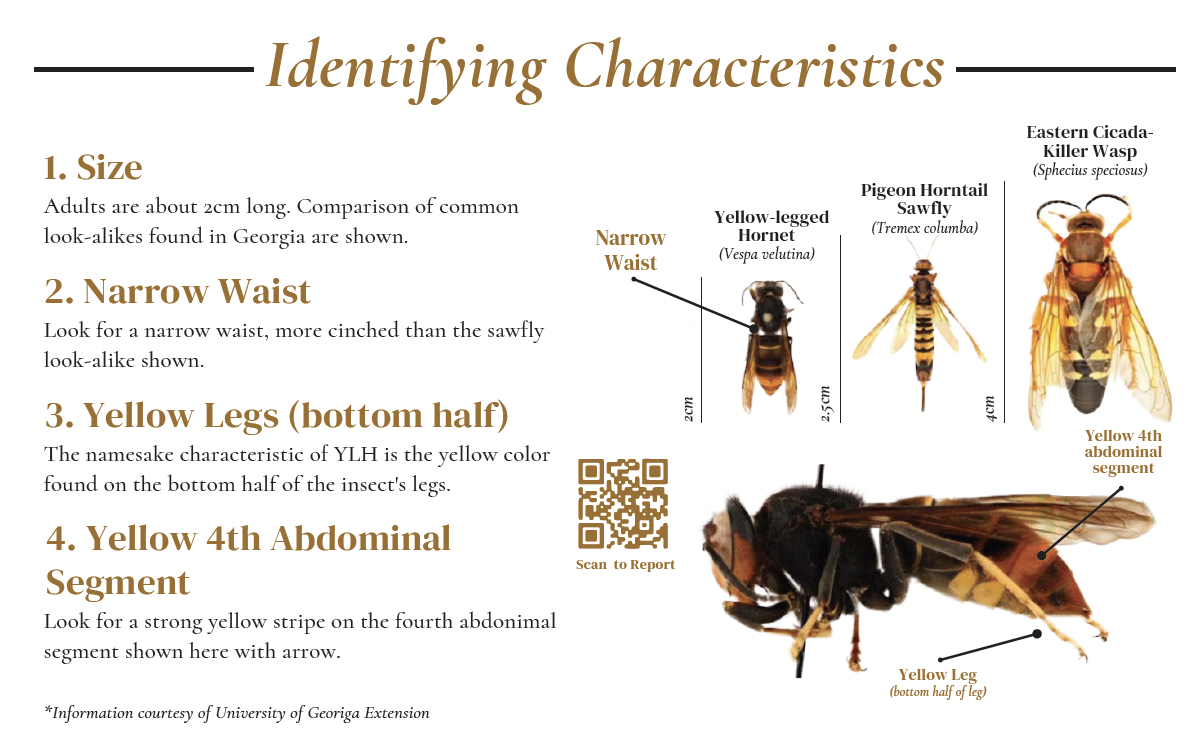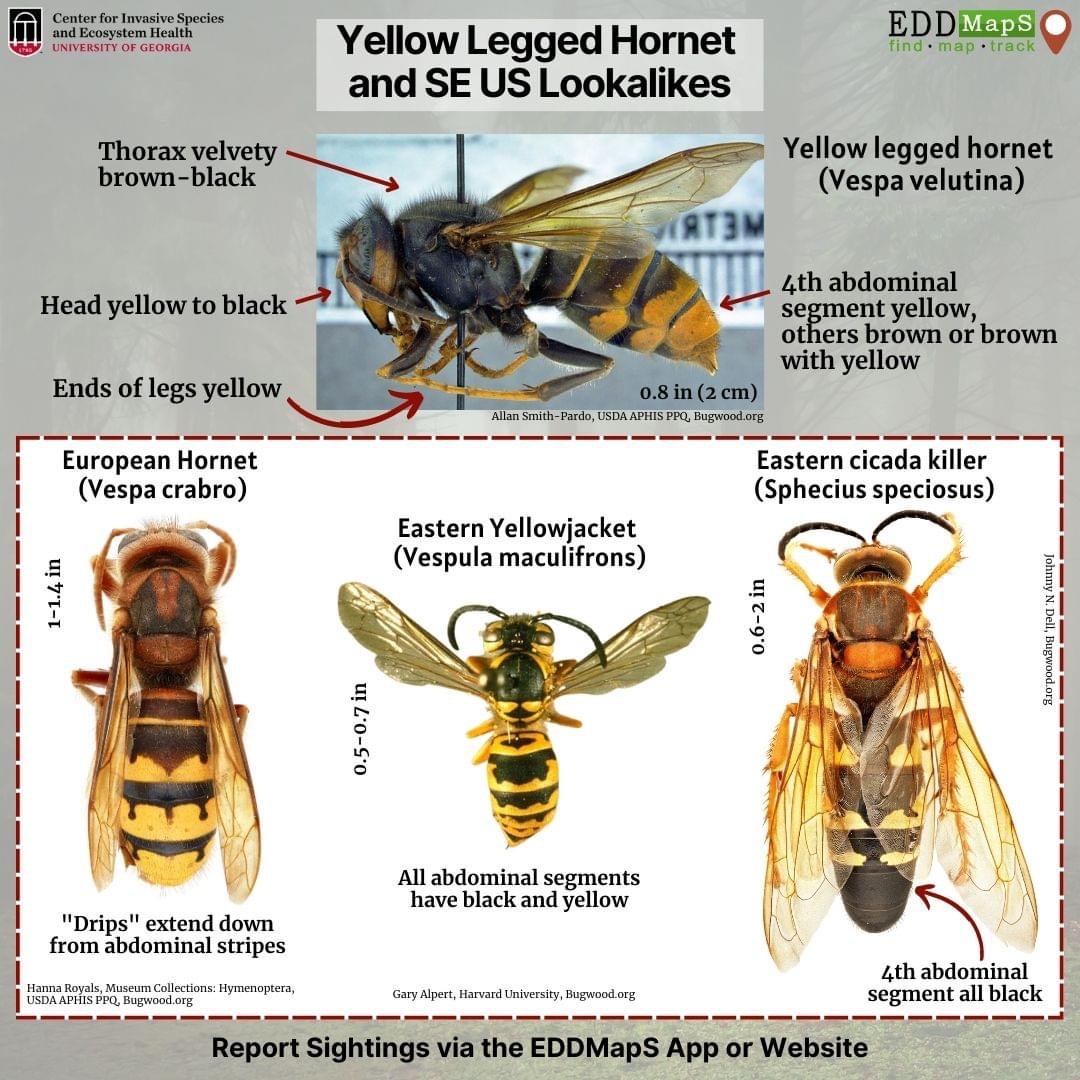test-blog
New season of tracking and eradicating Yellow-Legged Hornet begins
by Jennifer Whittaker
GFB Publications Editor
Posted on June 1, 2024 8:25 AM
It’s time to resume watching for the invasive yellow-legged hornet (YLH) first spotted in the Savannah area last August. By the end of 2023, the Georgia Department of Agriculture (GDA) identified and arranged for exterminators to destroy five mature YLH nests in Chatham County.
The YLH destroys honey bees that pollinate many Georgia crops. It’s native to tropical and subtropical areas of Southeast Asia but is established in Europe, parts of the Middle East and parts of Asia where it isn’t native.
In its Dec. 15, 2023, YLH Ledger, the GDA reported, “As temperatures drop, hornet activity naturally decreases. Through research, we know all hive members die off over winter except for future queens. We expect this will be the same in Georgia.”
On April 8 and 13, two Savannah area residents observed and reported YLH queens with embryo nests. Both were destroyed. By June 6, three more embryo nests had been reported and destroyed in the Savannah area.
GDA says mated YLH queens emerge in the spring to find a food source, build a small nest and begin producing workers. Embryo nests can range in size from a ping pong to a tennis ball and are usually found under sheltered areas like building eaves.
A Yellow-Legged Hornet embryo nest looks similar to the nest of the Bald-Faced Hornet. Photo courtesy of Ga. Dept. of Agriculture
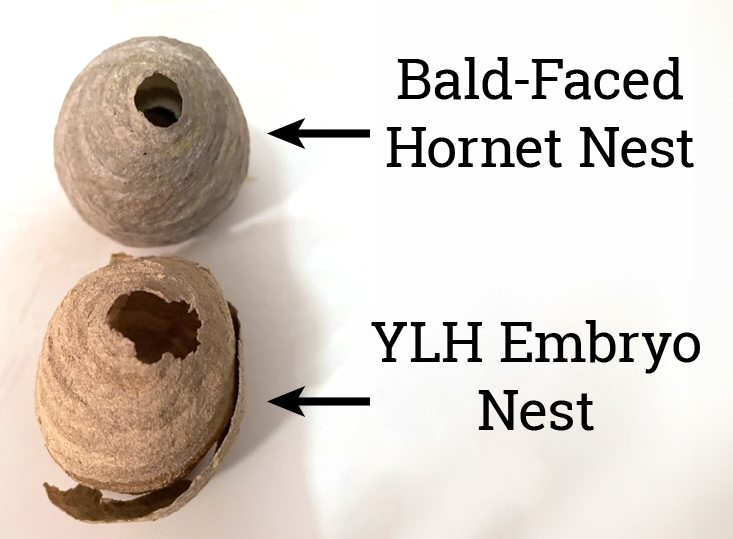
A yellow-legged hornet queen building an embryo nest. Photo courtesy of Ga. Dept. of Agriculture
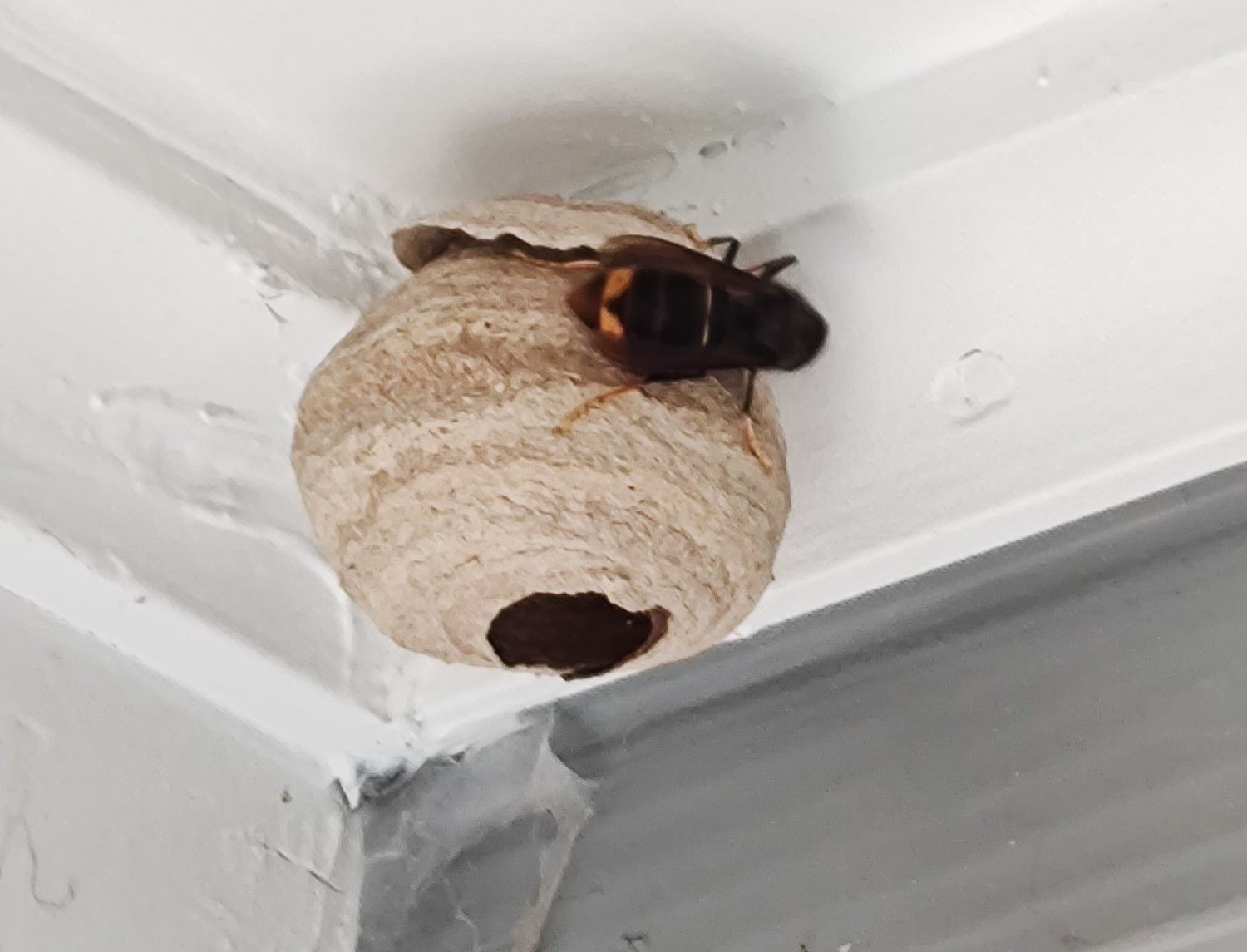
As a YLH colony grows, it forms a much larger secondary nest in summer. These tend to be built 80-100 feet up in trees.
This photo shows parts of a mature YLH nest destroyed last fall in the Savannah area./ Photo courtesy of GDA
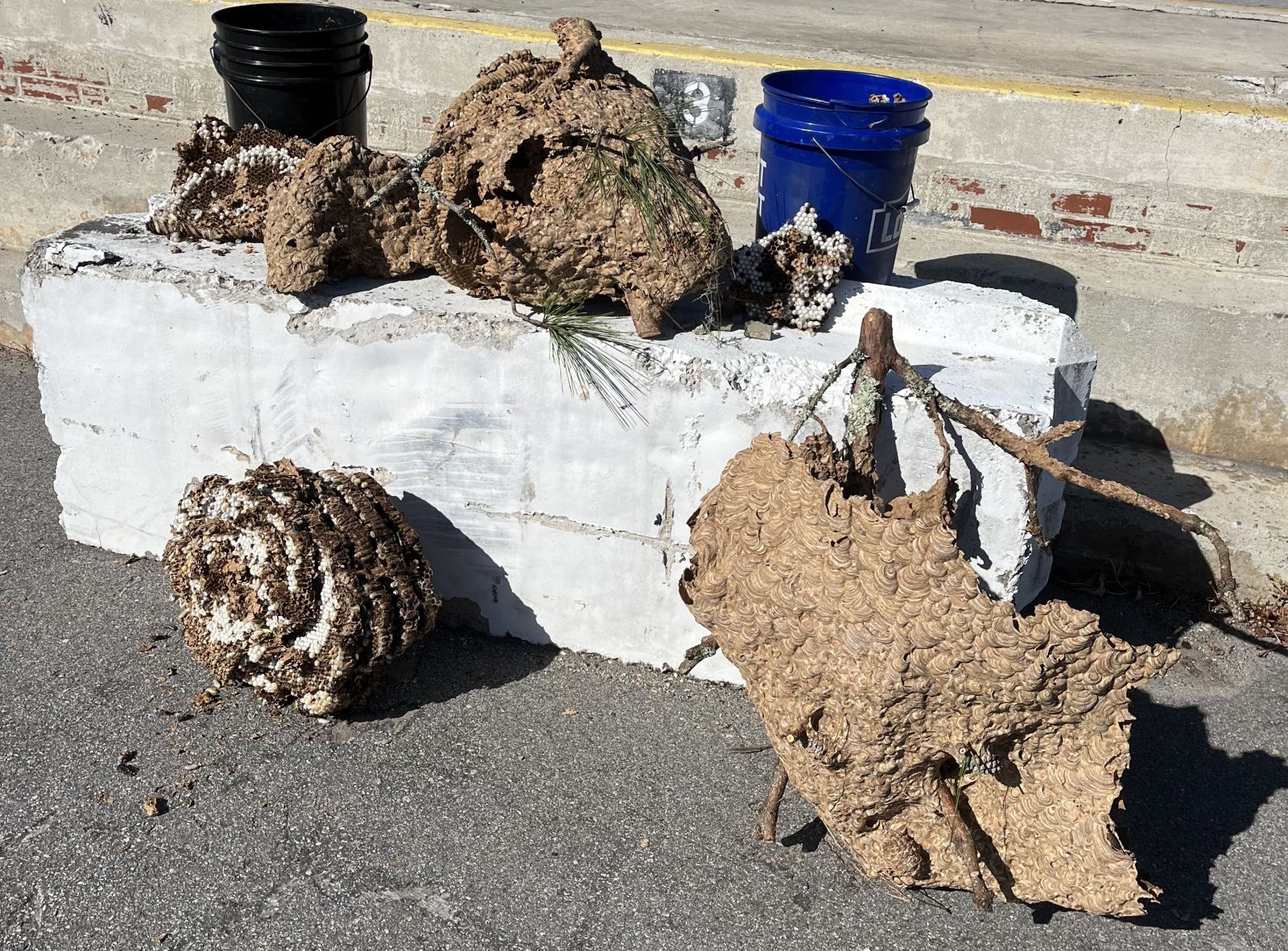
Beekeepers across Georgia can make simple traps to watch for the YLH using plastic juice containers and other common items.
The GDA has an instructional video on making a trap at https://agr.georgia.gov/Yellow-Legged-hornet, along with the latest updates and information.
Anyone who sees a suspected YLH, YLH embryo or mature nest is encouraged to take a photo and report it using an online YLH reporting form or email yellow.legged.hornet@agr.georgia.gov.
If you remove a YLH nest, it's crucial to ensure the queen has been eliminated to prevent her from establishing another nest. If unsure about removing a nest, contact GDA.
GDA has established a Facebook group: Georgia Hornet Watch to help educate Georgians www.gfb.ag/gdagahornetwatch.
GDA had 170 YLH traps in place by Dec. 15 that staff monitored over the winter. GDA has hired additional staff to help identify, track and monitor 640 traps in Coastal Georgia.
GDA is hiring part-time Yellow-Legged Hornet Trappers for seasonal positions (June – December). These trappers will support GDA eradication efforts with a salary between $15 - $17 per hour. If you reside in Chatham, Bryan, Effingham, Glynn, Liberty, or McIntosh Counties and are interested, please apply here. GDA plans to put out 1,000 traps this year.
GDA is now attaching lighter RFID trackers to captured YLHs that improve the chances of tracking a hornet back to its nest. GDA staff are using wing frequency sensors calibrated to recognize the YLH’s unique wingbeat speed to help detect YLH activity from the ground.
GDA is working with UGA Extension, USDA, Clemson University and the University of Florida to track and eradicate the YLH.
